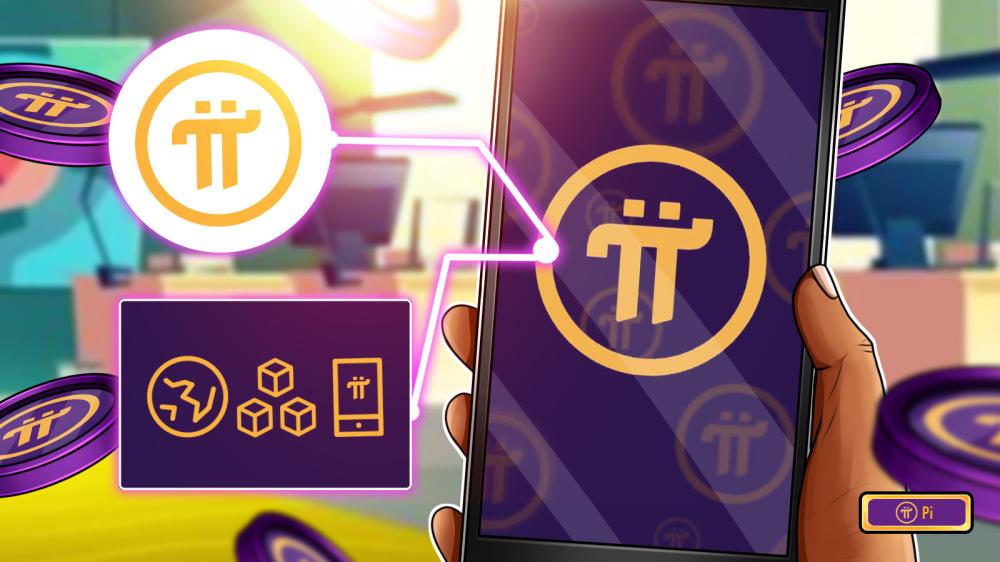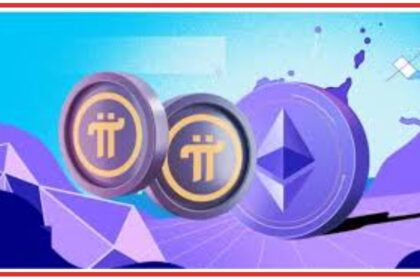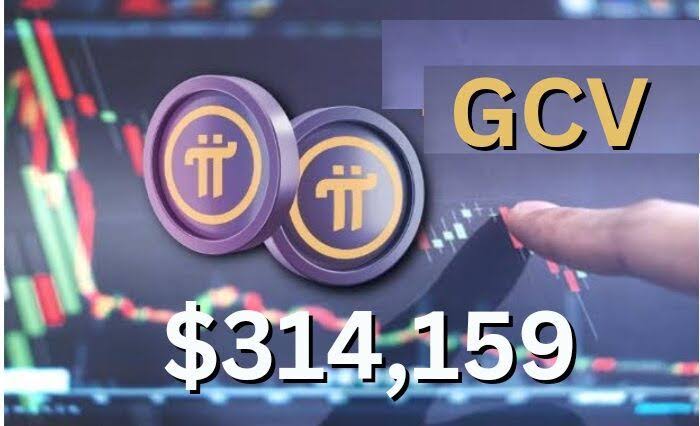You’ve probably heard about Pi Coin and the Pi Network by now. With over 55 million engaged pioneers mining Pi daily, it’s one of the largest cryptocurrencies in the world. But here’s the catch: you can’t actually sell your Pi yet. Say what? It’s true. All that mining you’ve done has racked up a nice little stash of Pi, but you can’t cash out just yet.
Why not? The network is still in testnet mode. Pi has to fully transition to mainnet before you can sell your coins on an exchange. You’ll also need to complete KYC verification first. Until then, your Pi is stuck in the app.
So what about those sketchy exchanges already selling Pi? It’s not the real deal. Any Pi for sale right now is an IOU, not official Pi coins. Consider it a placeholder that might pay off later. But for now, you can’t actually sell the Pi you’ve mined. Sit tight and keep mining. Your chance to cash out is coming.
What Is the Pi Network and Pi Coin?
The Pi Network
The Pi Network is a new cryptocurrency project that lets you earn Pi coins by helping to secure and expand the network. To join, you simply download the Pi Network app on your phone and tap the lightning button once a day to start mining.
Pi Coins: An Overview
Pi coins are the native currency of the Pi Network. At the moment, you cannot sell the Pi coins you’ve mined. However, you can use them to purchase goods and services within the Pi community on platforms like Reddit. The reason you can’t sell Pi yet is that the network is still in its “enclosed” phase. Before coins can be sold on exchanges, the network must transition to an “open” phase. You’ll also need to complete KYC verification before transferring coins out of the app.
Some exchanges are trading IOU Pi coins, but these aren’t the real thing. An IOU (I owe you) is a placeholder token representing future Pi coins. Whoever holds IOU Pi can exchange them for actual Pi once the network opens. The Pi Network team has warned that IOU Pi isn’t officially associated with the project. On CoinMarketCap, IOU Pi comes with a clear warning that the tokens can’t be transferred between exchanges.
The Road Ahead
The Pi Core Team is working to build the infrastructure and partnerships needed to transition Pi into an open, decentralized network. This includes setting up the Pi blockchain, wallet, and exchange where members can buy and sell Pi coins. Once the network opens, Pi’s value will be determined by the open market based on supply and demand. For now, all you need to do is keep mining to earn more Pi!
Why You Can’t Sell Your Mined Pi Coins Yet
At the moment, the Pi coins you’ve accumulated through mining are locked within the Pi network. This means you can’t sell them on crypto exchanges just yet. There are a couple of reasons for this:
The Pi Network is Still in Beta
The Pi network is currently in the beta testing phase known as the “enclosed network.” Until the network transitions to the open mainnet, your Pi coins will remain non-transferable. The mainnet launch is targeted for the end of 2021, so you’ll have to be patient.
KYC Verification is Required
Even after the mainnet launch, you’ll need to complete KYC (Know Your Customer) verification before you can transfer your Pi to an exchange. This is an important security step to prevent fraud and comply with regulations. The KYC process typically involves submitting a government ID and taking a selfie.
IOUs Are Not the Real Thing
Some exchanges are already trading IOU (I Owe You) tokens that represent future Pi coins. However, these IOUs are not endorsed by the Pi network and will not necessarily translate to actual Pi coins. The Pi network has warned users that IOUs cannot be transferred between exchanges and may hold no value. It’s best to avoid them altogether.
The bottom line is that real Pi coins are still in development and not ready to be bought or sold. But all that mining will pay off once the mainnet launches, KYC is complete, and exchanges start supporting the actual Pi network currency. Patience, young grasshopper! The future is looking bright for this new digital asset.
The Truth About Pi Tokens Trading on Exchanges
You may have noticed Pi tokens trading on some crypto exchanges and wondered how that’s possible when you can’t yet sell your own Pi. The truth is, those tokens are IOUs, meaning the exchange owes you the actual Pi tokens once they launch on the open network.
What’s an IOU?
An IOU is an “I owe you”—it’s a promise for something that will be delivered in the future. In this case, the exchange is promising to deliver actual Pi tokens once they’re released, in exchange for the IOUs you buy now. These IOUs allow people to speculate on the potential value of Pi and trade it before the mainnet launch.
Why can’t I sell my Pi yet?
The Pi network is still in its “enclosed” phase, meaning Pi tokens are stuck inside the app and can’t be transferred or sold. For the Pi team to open up the network, they need to finish security audits, implement KYC, and transition to an open blockchain. Once that happens, you’ll be able to transfer your Pi to an exchange or wallet and sell or trade it if you choose.
Should I buy Pi IOUs?
That’s risky. Since the exchanges aren’t actually trading real Pi tokens yet, there’s a chance the IOUs could drop in value or become worthless if anything were to go wrong with the Pi network launch. The Pi team has warned that they are not affiliated with any exchange selling IOUs. However, if the mainnet launch goes smoothly and Pi establishes value, IOU holders could potentially see gains.
As with any new crypto project, there is a lot of uncertainty around Pi. The good news is, as a pioneer you were able to earn Pi for free. Once the network opens, you’ll have choices on whether to hold, trade or sell your Pi tokens. Until then, the only Pi that has any actual value is what you’ve mined in the app—so keep mining!
How IOUs Work and Why You Should Avoid Pi IOUs
As discussed earlier, you cannot sell the Pi coins you’ve mined just yet. The Pi network is still in its enclosed mainnet phase, so your tokens remain locked in the app. Some exchanges have started trading IOU versions of Pi, but these are not the real Pi coins and should be avoided.
The Problem with Pi IOUs
The Pi tokens currently trading on exchanges are IOUs, not the actual Pi coins. The Pi team has warned that these IOUs are not official or endorsed. IOUs are risky because there’s no guarantee you’ll receive the actual asset. The exchange could close down, the project could be abandoned, or the real coins might never materialize.
A Cautionary Tale
To illustrate how IOUs work, imagine this scenario: John regularly buys gold in South Africa and sells it. One day, Ola wants to buy gold from John, but he’s currently out of stock. John gives Ola an “IOU gold” token, essentially saying “I owe you gold.” Ola can now sell or trade that IOU, and whoever ends up with it can exchange it for real gold when John returns. However, if John never comes back with the gold, the IOU becomes worthless.
The Bottom Line
Pi IOUs are extremely risky and speculative. There’s no telling if or when the actual Pi coins will launch, or if the IOUs will ever be exchangeable for real coins. For now, your best bet is to avoid Pi IOUs altogether and continue mining Pi coins through the official mobile app. Once the Pi network transitions to an open mainnet, your coins can be transferred to an exchange where you’ll be able to trade them for other cryptocurrencies or cash. But until then, patience is key.
Conclusion
So there you have it. Pi is still in testnet, meaning you can’t cash out yet. But the potential is massive if Pi succeeds in becoming a widely used global currency. For now, just keep mining and be patient. The more Pi you accumulate now, the better off you’ll be when mainnet launches. Who knows, maybe one day your phone will be mining coins that are actually worth something! I’m excited to see how it all plays out. Just remember – Pi is a long game, so hang in there and keep spreading the word. This could be the start of something huge. Read Similar Story

















#Athene #Network #ATH #Pi #PiNetwok #OpenEx #OEX
Good news Athene Network launched offical P2P trading Wesbite
Now you buy Sell … Ath Gem Pi on this Trading Site
Register your account link 👇
https://play.google.com/store/apps/details?id=network.athene.app
Invite code. 61b3fbe999
already registered on Athene network
Update your Athene Network profile
👉use this code invite: 61b3fbe999
I am sending you 1π! Pi is a new digital currency developed by Stanford PhDs, with over 47 million members worldwide. To claim your Pi, follow this link https://minepi.com/kanest and use my username (kanest) as your invitation code.
The Web3 business network for the AGI era.
In the dawn of the AGI (Artificial General Intelligence) era, the OpenEX Network is at the forefront of revolutionizing the Web3 landscape by building an open and efficient trading network. Our mission is to harness the power of blockchain technology to create a decentralized platform that not only meets the demands of today’s digital economy but also anticipates the future needs of an AGI-driven world.
https://oex.to/d/1YtksPn
At the heart of the OpenEX Network is the development of UniLayer2, a high-performance public blockchain designed to underpin our trading ecosystem. This foundation will support a suite of trading functionalities, token creation, fair launch practices, as well as smart contracts for staking, rewards, and voting. Each of these elements is crafted to ensure transparency, security, and user empowerment.
To provide a seamless and integrated experience, we are concurrently developing a corresponding DApp and mobile app. These interfaces will offer users easy access to our trading network, ensuring that whether you’re at your desk or on the move, the power of OpenEX is at your fingertips.
Furthermore, our trading protocol and DApp are engineered to operate flawlessly on both the Core Blockchain and the OEX Mainnet. This dual-layer integration guarantees not only high efficiency and scalability but also robustness and redundancy, safeguarding the network against potential vulnerabilities.
The OpenEX Network is more than just a trading platform; it’s a step into the future of decentralized finance, tailored for the imminent AGI era. We’re committed to building a world where transactions are not just transactions, but pathways to a fairer, more open financial world.
#OpenEx #Wallet #OEX #Satoshi
Satoshi – Global Free Airdrop
Satoshi is the world’s top one free airdrop platform,we will have various outstanding projects and tens of million crypto world residents.
https://www.btcs.love/invite/6yygn
Mine Pi for free on your phone!
I am sending you 1π! To claim your Pi, follow link https://minepi.com/yajer72 use (yajer72), your invitation code.
I am sending you 1π! Pi is a new digital currency developed by Stanford PhDs, with over 55 million members worldwide. To claim your Pi, follow this link https://minepi.com/daiv101 and use my username (daiv101) as your invitation code.
I am sending you 1π! Pi is a new digital currency developed by Stanford PhDs, with over 55 million members worldwide. To claim your Pi, follow this link https://minepi.com/dreamtreats and use my username (dreamtreats) as your invitation code.